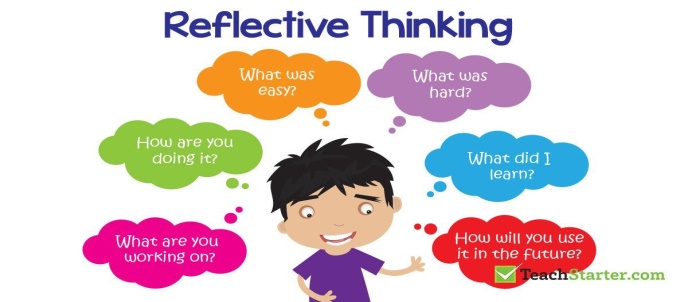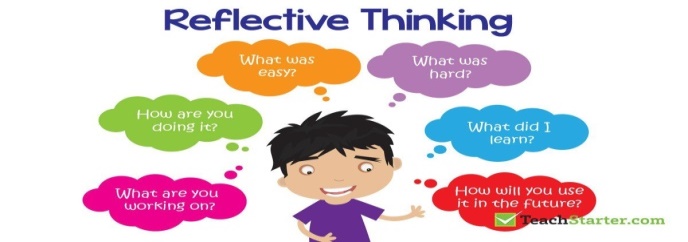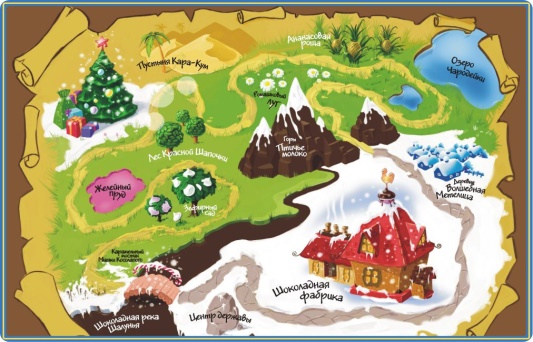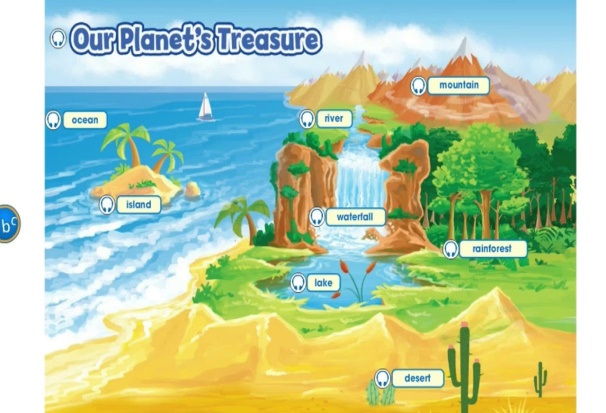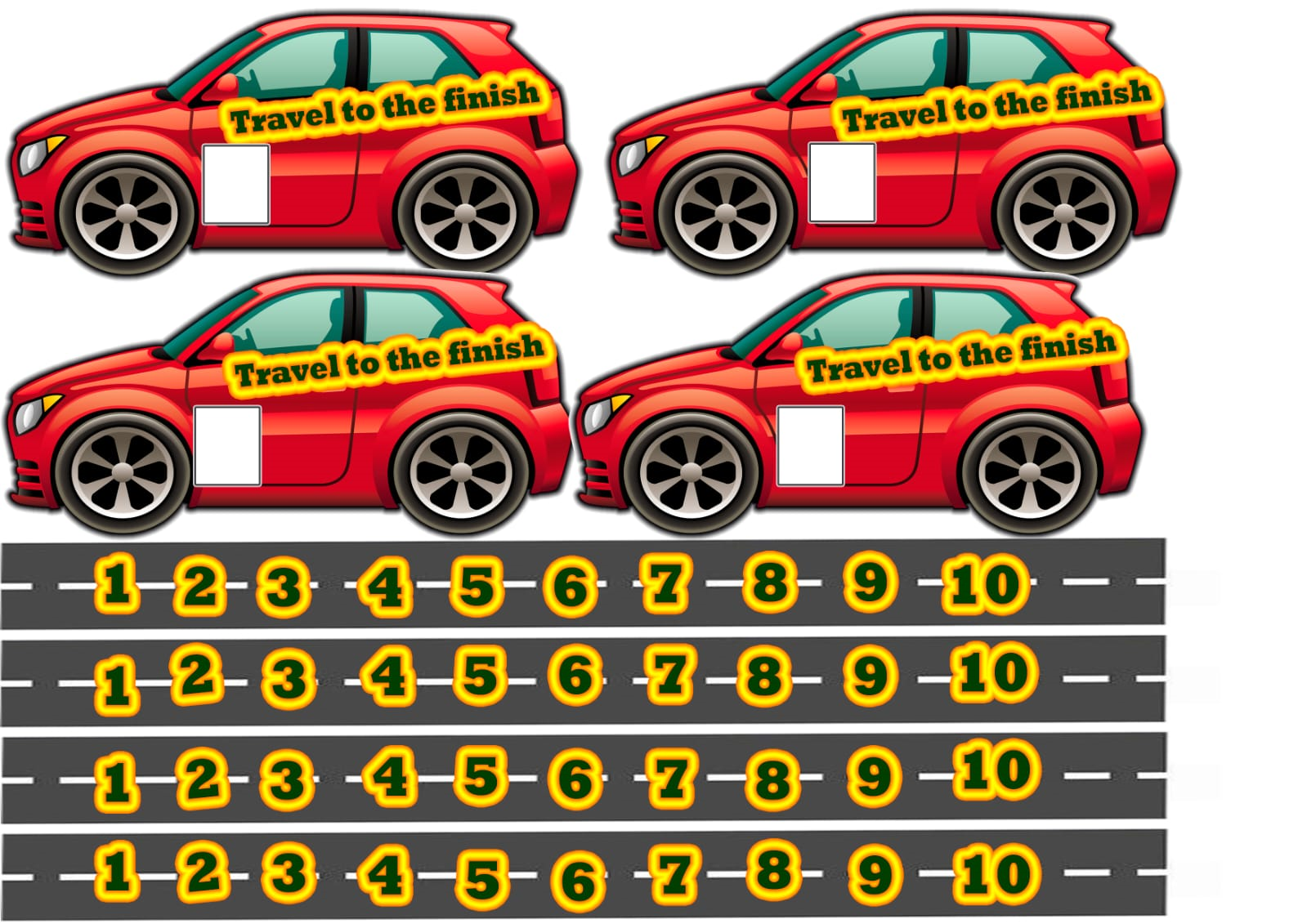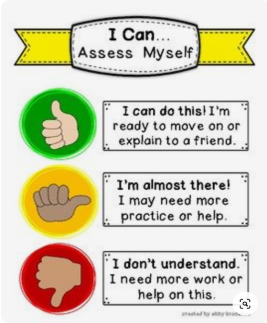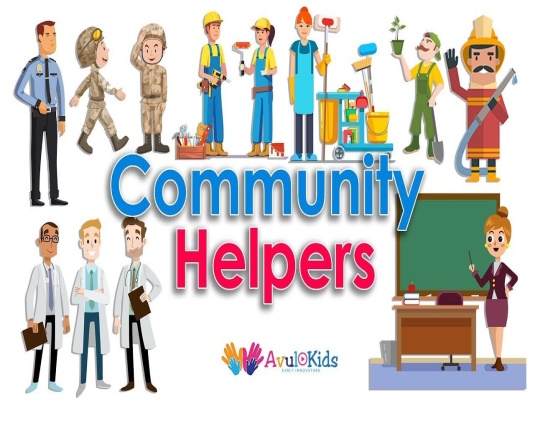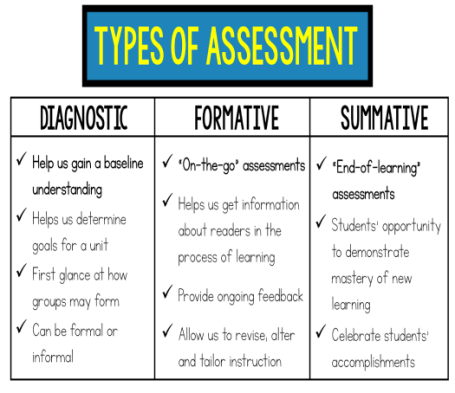Назар аударыңыз. Бұл материалды сайт қолданушысы жариялаған. Егер материал сіздің авторлық құқығыңызды бұзса, осында жазыңыз. Біз ең жылдам уақытта материалды сайттан өшіреміз
Жақын арада сайт әкімшілігі сізбен хабарласады

Бонусты жинап картаңызға (kaspi Gold, Halyk bank) шығарып аласыз
2 тоқсан
Дипломдар мен сертификаттарды алып үлгеріңіз!


Материалдың толық нұсқасын
жүктеп алып көруге болады
Short term plan: term 2
|
Unit: 3 Treasure and heritage |
Lesson 17 |
||
|
Teacher name: |
|
||
|
Date: |
|
||
|
Grade: 4 |
Number present: |
absent: |
|
|
Lesson title |
Treasure Maps 1-2 |
||
|
Learning objectives |
4.2.3.1 give short, basic description of people and objects on a limited range of general and some curricular topics begin to describe past experiences on an increasing range of general and some curricular topics 4.4.1.1 plan, write and check sentences with support on a range of basic personal, general and some curricular topics |
||
|
Lesson objectives |
Learners will be able to: - talk about Kazakhstan's natural treasures and I I cultural heritage - read about a treasure hunt.
|
||
|
Value links |
Family – Family values are moral and ethical principles of typical family life, including sacrificing for loved ones, putting your loved ones first, and keeping your loved ones at the centre of your thoughts and actions. |
||
|
Plan |
|||
|
Stages / Time |
Teachers actions |
Students actions |
Assessment criteria |
Resources |
|
Beginning of the lesson Warming-up
3 min. Pre-learning «Brainstorming» method 7 min. |
Organization moment : 1.Greeting. Ask about the weather. The teacher sets the lesson objectives, letting students know what to anticipate from the lesson. Warming up Where are you from? How old are you? What color is it? How many students are there in class? What day of the week today? Hand out the completed Progress Report Cards for the previous module and ask the pupils to file them in their language. Lead – In
|
The aim: To develop pupils speaking skills and create friendly atmosphere Efficiency: By wishing each other they feel better and feel the support of others Students of the class are listed. Students' attention is drawn to the lesson. Students say different words from the picture •Learners remember previous lesson vocabulary •Learners answer the questions What time do you get up every morning? What time do you go to school? What do you do after the lesson? |
The teacher to assess learners for their ability. “Good job! Well done!” Formative Assessment
Good job! Descriptor: - remembers the lesson passed Point 1 Assessment criteria make basic statements related to personal information, people and objects on familiar topics and a treasure hunt |
Pictures worksheet Picture |
|
Middle of the lesson Presentation part. 30 min |
Ex:1 P:37 • Ask the pupils to look at the pictures on p. 34 and have a picture discussion. Elicit anything the pupils may know about them. (e.g. Do you know what a dombra is? Can you play a dombra?). Explain the activity. Go through the sentences and elicit/explain any unknown words. The pupils answer the questions orally first, then in writing. Allow the pupils some time to complete the activity. Check their answers. Ex: 2 P: 37 • Put your pen in the book, write and say: There's a pen in the book. Underline the word in bold. The pupils repeat after you. Follow the same procedure and present the rest of the prepositions (out of, in front of, up, down, behind, opposite, on, under). • Refer the pupils to the pictures and have a picture discussion. Ask the pupils if they know what a treasure hunt is and elicit answers. Read aloud the text while the pupils follow in their books. Alternatively, you can ask the pupils to read it aloud. Explain the activity. Go through the questions and elicit/explain any unknown words. Allow the pupils some time to read the text silently and complete the activity. Check their answers. Conclusion during the lesson some tasks differentiated by outcomes of the students and by their abilities. |
• learners look at the map and answer the question ANSWERS 2 Kaindy Lake 3 Apples 4 The Bayterek Monument 5 Sherkala 6 Singing Sand 7 A dombra 8 An eagle • learners read and answer. Write in your notebook. ANSWERS 2 On 29th September. 3 11 4 In the park. 5 6 6 Behind the tree. 7 In a box opposite the |
Descriptor: -understand general idea - complete the activity T
Self assessment Differentiation: «Verbal support» method is used to help Ss use new words in the sentences. Descriptor: - read aloud the text - answer questions Total: 3 point -Make CCQ questions Yes / No |
Card Worksheet Students book |
|
End of the lesson 5 min |
FEEDBACK Learners provide feedback on what they have learned at the lesson. Ex: P: Home task: Write the days |
|
Poster Success
|
|
Short term plan: term 2
|
Unit 3: Treasure and heritage |
Lesson 18 |
||
|
Teacher name: |
|
||
|
Date: |
|
||
|
Grade: 4 |
Number present: |
absent: |
|
|
Lesson title |
Treasure and numbers1 |
||
|
Learning objectives |
4.4.1.1 plan, write and check sentences with support on a range of basic personal, general and some curricular topics 4.4.7.1 spell most familiar high-frequency words accurately when writing independently; 4.5.2.1 use cardinal numbers 1 -1000 and ordinal numbers 1 – 100 |
||
|
Value links |
Loyalty – Loyalty might be a core personal value to you if you highly prize friends that are reliable and trustworthy. You might put your friends or chosen family first, always being there for them when they need you. |
||
|
Lesson objectives |
Learners will be able to: - learn about numbers - talk about location |
||
|
Plan |
|||
|
Stages / Time |
Teachers actions |
Students actions |
Assessment criteria |
Resources |
|
Beginning of the lesson Warming-up
3 min Pre-learning «Brainstorming» method 7 min. |
Organization moment : 1.Greeting. Ask about the weather. The teacher sets the lesson objectives, letting students know what to anticipate from the lesson. Warming up Where are you from? How old are you? What color is it? How many students are there in class? What day of the week today? Ask a few pupils to stand up and stand in a row. Ask the rest of the class questions to revise the ordinals. Lead – In
|
The aim: To develop pupils speaking skills and create friendly atmosphere Efficiency: By wishing each other they feel better and feel the support of others Students of the class are listed. Students' attention is drawn to the lesson. Determines the topic and purpose of the lesson •Learners remember previous lesson vocabulary Students say different words from the picture Answer the question. |
The teacher to assess learners for their ability. “Good job! Well done!” Formative Assessment
Good job! Descriptor: - know daily routines vocabulary - know prepositions of place Point 1 Assessment criteria - Learners have met the learning objectives if they can talk about numbers and location; |
Pictures worksheet Student’s book |
|
Middle of the lesson Presentation part. 30 min |
Ex:3 P:38 • Put the flashcards up on the board. Point to the numbers, one at a time, and say the corresponding words. The pupils repeat chorally and/or individually. Point to the numbers in random order and ask individual pupils to name them. Ask the rest of the class for verification. Ex: 4 P: 38 • Write the following sums on the board. Read aloud the sums and draw the pupils' attention to the names of the symbols (+ plus, - minus, x times, = equals). 1+1=2 (one plus one equals two) 2-1-1 (two minus 1 equals one) 2x2-4 (two times two equals four) • Read the sum in the example and ask the pupils to give you the solution orally. Ask them to point to the correct number on the map. Explain that the solutions to the problems is one of the numbers on the map. Then refer them to the number written in letters in the model and explain the activity. Allow the pupils some time to complete it. Check their answers. Ex: 5 P: 39 • Put your pencil on the left of a book, show it to the class and ask: Where is the pencil? Answer: It's on the left of the book. Write the exchange on the board and underline the words in bold. The pupils repeat, chorally and/or individually. Follow the same procedure and present the rest of the prepositions. Drill your pupils: • Go through the Study spot section briefly. Read the instructions and explain the activity. Allow the pupils some time to read the sentences and underline the correct prepositions. Check their answers. |
• Pupils listen, point and repeat. Then match ANSWERS 2 E 3 C 4 D 5 A • Pupils find Captain Jack Parrot's treasure! Do the sums and cross off the places on the map. The last place is where the treasure is. ANSWERS 2 six hundred 3 five hundred and forty 4 eight hundred and thirty 5 six hundred and ninety 6 one thousand The treasure is at 1,000. • Pupils look, read and underline ANSWERS 2 right 3 between 4 right 5 on the left of |
Descriptor: - point to each flashcard - ask individual pupils to name them Total: 2 point pupils are evaluated by collecting fish
Descriptor: - know the numbers - can do the sums -complete the sentences Total: 2 point Descriptor: -can use grammar structure - can choose the correct option according to the listening Total: 1 point
Self assessment -Make CCQ questions Yes / No Total: 10 point |
Card Worksheet Students book |
|
End of the lesson 5 min |
FEEDBACK Learners provide feedback on what they have learned at the lesson. Ex: P: Home task: Write the days |
|
Poster Success
|
|
Short term plan: term 2
|
Unit 3: Treasure and heritage |
Lesson 19 |
||
|
Teacher name: |
|
||
|
Date: |
|
||
|
Grade: 4 |
Number present: |
absent: |
|
|
Lesson title |
Study spot |
||
|
Learning objectives |
4.2.1.1 make basic statements which provide information on an increasing range of general and some curricular topics 4.4.3.1 write with support short sentences which describe people, places and objects; |
||
|
Lesson objectives |
Learners will be able to: - develop listening and reading comprehension skills through a story - talk about a class expedition - learn how to pronounce/ʃn/ and I its different spellings. |
||
|
Value links |
Fairness – If you value fairness, you might be highly sensitive to situations at school or in the workplace where a teacher or a peer has exhibited favoritism or allowed someone to get away with living by a different set of rules to everyone else. |
||
|
Plan |
|||
|
Stages / Time |
Teachers actions |
Students actions |
Assessment criteria |
Resources |
|
Beginning of the lesson Warming-up
3 min Pre-learning «Brainstorming» method 7 min. |
Organization moment : 1.Greeting. Ask about the weather. The teacher sets the lesson objectives, letting students know what to anticipate from the lesson. Warming up Where are you from? How old are you? What color is it? How many students are there in class? What day of the week today? revise the vocabulary from the previous Lead – In
How the pupils get to the treasure? |
. The aim: To develop pupils speaking skills and create friendly atmosphere Efficiency: By wishing each other they feel better and feel the support of others Students of the class are listed. Students' attention is drawn to the lesson. • Learners remember previous lesson vocabulary Determines the topic and purpose of the lesson Students say different words from the picture |
The teacher to assess learners for their ability. “Good job! Well done!” Formative Assessment
Good job! Descriptor: - can tell the time Point 1 Assessment criteria - Learners have met the learning objectives if they can talk about a class expedition |
Pictures worksheet Picture |
|
Middle of the lesson Presentation part. 30 min |
Ex:7 P: 40 • Go through the pictures of the story and set the scene by asking the pupils questions about what they can see in the pictures. Ex: 8 P: 41 • Explain the activity. Allow the pupils some time to read the story again silently and answer the questions. Check their answers. Ask the pupils to tell you where they found the answers in the dialogue. Ex: 9 P: 41 • Explain the activity. In pairs, the pupils read the questions and discuss the answers with their partner. Ask pairs to report back to the class. Accept all reasonable answers. Ex: 11 P: 41 • Refer the pupils to the picture and the dialogue. Play the CD. The pupils listen and follow along. Pause the CD for the pupils to repeat, chorally and/or individually. The pupils, in pairs, act out similar dialogues. Go around the classroom providing any necessary help. Ask some pairs to come to the front of the classroom and act out the dialogue. If you wish, write the following on the board so the pupils can refer to it while they are completing the activity. Ex: 11 P: 41 Refer the pupils to the pictures. Point to the first picture and say: /ʃn/- fashion. The pupils repeat, chorally and/or individually. Check their pronunciation. Repeat the procedure for mansion and exhibition. Check their pronunciation. Review the spelling of the different words and explain/elicit how the words are spelled differently but the ending is pronounced the same. Conclusion during the lesson some tasks differentiated by outcomes of the students and by their abilities. |
•Pupils listen and read. ANSWERS Teacher: (pointing to picture 1) Where are the children? Class: They are at a park. Teacher: (pointing to Lilly in picture 3) What's wrong with Lilly? Class: She got sunburnt! etc •Pupils read the story and answer the questions. ANSWERS 1 To find ten leaves and name the trees. 2 A classmate, Drake. 3 Because her arms are sore. 4 Jake's. 5 Jake's team. •Pupils work in pairs. Discuss the answers with their partner ANSWERS 1 They all stayed together and helped each other. They worked as a team. 2 Yes, because Drake left his team behind. He didn't care about his team. He only cared about winning. •Pupils listen and read. Make a new dialogue with your friend ANSWERS A: So, what's today's expedition? B: We must find these ten wild flowers, name them and draw them in our notebooks. A: This should be easy. Let's do it! •Pupils listen, point and repeat ANSWERS |
Descriptor: - read and understand general idea Total: 1 point
Descriptor: - understand general idea - read the story silently Total: 1 point
Descriptor: - work in pairs - discuss the answers Total: 1 point Descriptor: -read and understand general idea-1point. -create new dialogue- -Make CCQ questions Yes / No
pupils are evaluated by collecting pencils |
Card Worksheet |
|
End of the lesson 5 min |
FEEDBACK Learners provide feedback on what they have learned at the lesson. Ex: Home task: |
|
Poster Success
|
|
Short term plan: term 2
|
Unit 3: |
Lesson 20 |
||
|
Teacher name: |
|
||
|
Date: |
|
||
|
Grade: 4 |
Number present: |
absent: |
|
|
Lesson title |
Our planet’s treasure |
||
|
Learning objectives |
4.1.4.1 understand an increasing range of short supported questions on general and some curricular topics 4.2.5.1 pronounce an increasing range of words, short phrases and simple sentences intelligibly |
||
|
Lesson objectives |
Learners will be able to: - talk about natural features. |
||
|
Value links |
Honesty – You may highly value telling people the truth. This one gets tricky when being honest can be hurtful to others. So, a person who really puts honesty first might be the sort of person who will tell the truth even if it hurts to do so. |
||
|
Plan |
|||
|
Stages / Time |
Teachers actions |
Students actions |
Assessment criteria |
Resources |
|
Beginning of the lesson Warming-up
3 min Pre-learning «Brainstorming» method 7 min. |
Organization moment : 1.Greeting. Ask about the weather. The teacher sets the lesson objectives, letting students know what to anticipate from the lesson. Warming up Where are you from? How old are you? What color is it? How many students are there in class? What day of the week today? revise the language from the previous lesson Lead – In
|
The aim: To develop pupils speaking skills and create friendly atmosphere Efficiency: By wishing each other they feel better and feel the support of others Students of the class are listed. Students' attention is drawn to the lesson. • Learners talk about daily routines previous lesson vocabulary Determines the topic and purpose of the lesson Students say different words from the picture |
The teacher to assess learners for their ability. “Good job! Well done!” Formative Assessment
Good job! Descriptor: - talk about daily routines Point 1 Assessment criteria - Learners have met the learning objectives if they can talk about natural features |
Pictures worksheet Student’s book |
|
Middle of the lesson Presentation part. 30 min |
Ex:14 P:42 • Put up the Our planet's treasure poster on the board. Point to the natural features, one at a time, and say the corresponding words. The pupils repeat, chorally and/or individually. Point to each natural feature in random order. Ask individual pupils to name them. • Play the CD. The pupils listen. point to the words and repeat. If you wish, play the CD again pausing after each word. The pupils repeat, chorally and/or individually. Then the pupils look at the pictures and match them to the words. Check their answers. Ex: 15 P: 42 • Explain the activity. Allow the pupils some time to complete it. Check their answers. Ex: 16 P: 43 • Say and write on the board: This is a desert. This is an island. Underline the words in bold. The pupils repeat chorally and/or individually. Explain to the pupils that we use a before nouns that begin with a consonant sound and we use an before nouns that begin with a vowel sound. Say and write on the board: This is a desert. This is the Sahara Desert. Underline the words in bold. The pupils repeat chorally and/or individually. Explain to the pupils, in L1 if necessary, that we use the indefinite article a when we refer to something general, and the definite article the when we refer to something specific. Then say and write on the board: This is an island. This is Malta. Explain to the pupils that we use the definite article the only before names of deserts, lakes and oceans, but we don't use it before names of mountains, lakes, islands and countries. Conclusion during the lesson some tasks differentiated by outcomes of the students and by their abilities. |
Pupils listen, point and repeat. Then match ANSWERS 2 G 3 E 4 A 5 C 6 F 7 B 8 H Pupils read and choose the right word. ANSWERS 1 A 2 B 3 B 4 B 5A 6 A Pupils read and choose ANSWERS 2 B 3 C 4 A 5 C 6 A |
Descriptor: - repeat, chorally and/or individually - look at the pictures and match Total: 2 point
Descriptor: -use key words. - choose the right word. Total: 2 point
pupils are evaluated by collecting colour pencils Descriptor: - can use grammar structure -can make different sentences. Total: 3 point
-Make CCQ questions Yes / No Total: 10 point |
Card Worksheet Students book |
|
End of the lesson 5 min |
FEEDBACK Learners provide feedback on what they have learned at the lesson. Ex: Home task: |
|
Poster Success
|
|
Short term plan: term 2
|
Unit: 3: Treasure and heritage |
Lesson 21 |
||
|
Teacher name: |
|
||
|
Date: |
|
||
|
Grade: 4 |
Number present: |
absent: |
|
|
Lesson title |
Our planet’s Treasure. My holiday |
||
|
Learning objectives |
4.1.3.1 understand the main points of short, supported talk on an increasing range of general and some curricular topics 4.3.3.1 recognise basic opinions in short, simple texts on an increasing range of general range of general and some curricular topics; 4.4.4.1 write with support a sequence of short sentences in a paragraph to give basic personal information |
||
|
Lesson objectives |
Learners will be able to: - read and write an email about your last I holidays - develop the pupils' listening skills through a song. |
||
|
Value links |
Generosity – This may be a core value of yours if you cherish people who will give their time and resources to people in need. You may consider yourself to be a generous person if you find joy and meaning in giving to others. |
||
|
Plan |
|||
|
Stages / Time |
Teachers actions |
Students actions |
Assessment criteria |
Resources |
|
Beginning of the lesson Warming-up
3 min Pre-learning «Brainstorming» method 7 min. |
Organization moment : 1.Greeting. Ask about the weather. The teacher sets the lesson objectives, letting students know what to anticipate from the lesson. Warming up Where are you from? How old are you? What color is it? How many students are there in class? What day of the week today? Revise the vocabulary from the previous lesson Lead – In
|
The aim: To develop pupils speaking skills and create friendly atmosphere Efficiency: By wishing each other they feel better and feel the support of others Students of the class are listed. Students' attention is drawn to the lesson. • Learners talk about days of the week previous lesson vocabulary Determines the topic and purpose of the lesson Students say different words from the picture |
The teacher to assess learners for their ability. “Good job! Well done!” Formative Assessment
Good job! Descriptor: - talk about days of the we Total: 1 point Assessment criteria - Learners have met the learning objectives if they can talk about your last I holidays. |
Pictures worksheet picture |
|
Middle of the lesson Presentation part. 30 min |
Ex:19 P:44 • Refer the pupils to the picture and ask them to guess where Pat went on holiday and what she did. Allow the pupils some time to read the text silently and complete the activity. Play the CD. The pupils listen and follow the text in their books. Check their answers. Ex: 20 P: 40 • Explain the activity. The pupils read and answer the questions orally first, then in writing. Check their answers. PORTFOLIO: • Elicit from the pupils where they went for their summer holiday. Then ask the pupils, in pairs or in groups, to talk about their holidays. For homework, tell the pupils to write an email to their friend and to use the text in Ex. 18 as a model. Ex: 21 P: 45 • Point to the picture and say: We're going to go on holiday and have a lot of fun! The pupils repeat. chorally and/or individually. Follow the same procedure and present the rest of the song. Ex: 22 P: 45 • Refer the pupils to the pictures and revise the words. Read aloud the example and explain the activity. Go through the sentences and elicit/explain any unknown words. Explain to the pupils that the sentences are clues to find the correct answer. Allow the pupils some time to complete the activity. Check their answers. Conclusion during the lesson some tasks differentiated by outcomes of the students and by their abilities. |
• Pupils read and circle. Then listen and check. ANSWERS 1 the Pacific Ocean 2 morning 3 rainforest 4 waterfalls • Pupils take roles and continue the conversation. ANSWERS 1 I went to Lake Balkhash. 2 I went with my family. 3 I went swimming, sailing and fishing. 4 I saw many birds. • Pupils talk with your friends. Then write an email to your friend about your last holidays.. ANSWERS Hi Gulnara, How are you? I'm writing to tell you about my holiday in Lake Balkhash. It was great! I went there with my family. I swam in the lake every day. We saw many birds there. Mum and dad took me sailing and fishing, too. It was a wonderful holiday! Write and tell me all about your holiday. Take care. Daniya\ • Pupils Let’s Sing! ANSWERS Sing a song • Pupils your friend from the UK visited you last summer. Decide, then tell your friend ANSWERS 2 a mountain 3 a desert 4 an island 5 a rainforest 6 an ocean 7 a river 8 a lake |
Descriptor: -understand meaning of the text - identify the words Total: 3 point Descriptor: -can understand general idea - can follow the instructions Total: 2 point
Self assessment Descriptor: -understand meaning of the text - write an email to your friend Total: 2 point Descriptor: -use key words -Ask and answer the questions. Total: 2 point
pupils are evaluated by collecting fish -Make CCQ questions Yes / No Total: 10 point |
Card Worksheet Vocabulary card |
|
End of the lesson 5 min |
FEEDBACK Learners provide feedback on what they have learned at the lesson. Ex: Home task: |
|
Poster Success
|
|
Short term plan: term 2
|
Unit 3: Treasure and heritage |
Lesson 22 |
||
|
Teacher name: |
|
||
|
Date: |
|
||
|
Grade: 4 |
Number present: |
absent: |
|
|
Lesson title |
CLIL geography. |
||
|
Learning objectives |
4.1.4.1 understand short, supported narratives on an increasing range of general and some curricular topics 4.2.6.1 take turns when speaking with others in a growing range of short, basic exchanges |
||
|
Lesson objectives |
Learners will be able to: - explore other subject areas (Geography) - talk about natural wonders - raise the pupils' environmental awareness. |
||
|
Value links |
Generosity – This may be a core value of yours if you cherish people who will give their time and resources to people in need. You may consider yourself to be a generous person if you find joy and meaning in giving to others. |
||
|
Plan |
|||
|
Stages / Time |
Teachers actions |
Students actions |
Assessment criteria |
Resources |
|
Beginning of the lesson Warming-up
3 min Pre-learning «Brainstorming» method 7 min. |
Organization moment : 1.Greeting. Ask about the weather. The teacher sets the lesson objectives, letting students know what to anticipate from the lesson. Warming up Where are you from? How old are you? What color is it? How many students are there in class? What day of the week today? Revise the language of the previous lesson. Lead – In
|
The aim: To develop pupils speaking skills and create friendly atmosphere Efficiency: By wishing each other they feel better and feel the support of others Students of the class are listed. Students' attention is drawn to the lesson. Determines the topic and purpose of the lesson • Learners talk about favourite dayprevious lesson vocabulary Students say different words from the picture and count one to hundred |
The teacher to assess learners for their ability. “Good job! Well done!” Formative Assessment
Good job! Descriptor: - talk about favourite day Total: 1 point Assessment criteria - Learners have met the learning objectives if they can talk about natural wonders. |
Pictures worksheet Student’s book |
|
Middle of the lesson Presentation part. 30 min |
Ex:23 P:46 • Say and write on the board: natural wonders. The pupils repeat, chorally and/or individually. Explain/ Elicit what natural wonders are. Have a brief class discussion, in L1 if necessary, about natural wonders in their country and how important they are to the planet. Refer the pupils to the pictures and the title and have a class discussion about these seven natural wonders. Elicit anything the pupils might know about them. Read aloud the countries/regions and ask the pupils if they know or if they can guess where these natural wonders are. Explain the activity and play the CD. The pupils listen and match. Check their answers. Ex: 24 P: 47 • Refer the pupils to the picture and have a brief picture discussion. Read aloud the text or ask some of the pupils to read it. The pupils listen and follow in their books. Explain the activity. Refer the pupils to the questions. The pupils read the text silently and choose the correct answer. Check their answers. Ex: 25 P: 47 Brainstorm the names of various natural wonders from around the world and write them on the board. Have a class discussion, in L1 if necessary, about the problems they face. Explain the activity. The pupils use the Internet to find information about another natural wonder and present it to the class. Tell them to use the text in Ex. 23 as a model. Conclusion during the lesson some tasks differentiated by outcomes of the students and by their abilities. |
Pupils listen and match. Then talk with your friend ANSWERS 2 D 3 C 4 F 5 A 6 G 7E Pupils read and choose ANSWERS 1 A 2 A 3 B 4 B Pupils find information about another natural wonder. Make a project presentation. Present it to the class. ANSWERS The Amazon Rainforest in South America is one of the world's natural wonders. It is the largest rainforest in the world and is home to many kinds of animals. But the Amazon is getting smaller and smaller. This is because people throw rubbish into the river and cut down the trees. Let's hope we can look after this amazing wonder so people can still see it hundreds of years from now! |
Descriptor: - listen and repeat, chorally and/or individually -identify the natural wonders Total: 2 point
Self assessment Descriptor: - read aloud the text -complete the activity Total: 3 point Descriptor: - find information about another natural wonder - make a projet Total: 3 point pupils are evaluated by collecting colour pencils
-Make CCQ questions Yes / No Total: 10 point |
Card Worksheet Students book |
|
End of the lesson 5 min |
FEEDBACK Learners provide feedback on what they have learned at the lesson. Ex: Home task: |
|
Poster Success
|
|
Short term plan: term 2
|
Unit 3: Treasure and heritage |
Lesson 23 |
||
|
Teacher name: |
|
||
|
Date: |
|
||
|
Grade: 4 |
Number present: |
absent: |
|
|
Lesson title |
Our world Summative Assessment for the cross curricular unit «Treasure and heritage |
||
|
Learning objectives |
4.2.8. 1 express basic likes and dislikes, recount short, basic stories and events on a limited range of general and some curricular topics 4.3.5.1 understand the main points of short simple texts on a growing range general and some curricular topics by using contextual clues |
||
|
Lesson objectives |
Learners will be able to: - revise talking about natural features and natural wonders. |
||
|
Value links |
Integrity – Integrity is the quality of having strong moral principles. So, a person with integrity will always act with honesty and adhere to their own moral code regardless of what others do. |
||
|
Plan |
|||
|
Stages / Time |
Teachers actions |
Students actions |
Assessment criteria |
Resources |
|
Beginning of the lesson Warming-up
3 min Pre-learning «Brainstorming» method 7 min. |
Organization moment : 1.Greeting. Ask about the weather. The teacher sets the lesson objectives, letting students know what to anticipate from the lesson. Warming up Where are you from? How old are you? What color is it? How many students are there in class? What day of the week today? Revise the language of the previous lesson. Lead – In
Where is the lake kaindy located? |
The aim: To develop pupils speaking skills and create friendly atmosphere Efficiency: By wishing each other they feel better and feel the support of others Students of the class are listed. Students' attention is drawn to the lesson. • Learners write the numbers from previous lesson Determines the topic and purpose of the lesson Students say different words from the picture |
The teacher to assess learners for their ability. “Good job! Well done!” Formative Assessment
Good job! Descriptor: -know key phrases - can make sentence - know vocabulary of previous lesson Total: 1 point Assessment criteria - Learners have met the learning objectives if they can: To talk about natural features and natural wonders |
Pictures worksheet Student’s book |
|
Middle of the lesson Presentation part. 30 min |
Ex:26 P:48 • Ask the pupils to look at the pictures. Have a picture discussion • Ask the pupils to tell you what they know about these places. Play the CD. The pupils listen and follow the texts in their book.. Ask the pupils which place they would like to visit and why. Elicit answers from individual pupils. Ex: 27 P: 48 • Read the instructions and the example and explain the activity. The pupils read again the texts silently and complete the activity. Check their answers. Ex: 28 P: 48 Ask the pupils to think of natural wonders in Kazakhstan and write a small paragraph about it using the texts in Ex. 25 as models. They can draw or look for pictures on the Internet and attach them. Alternatively, assign the project for homework. The pupils then present their projects to the class. Display their work in the classroom. Summative Assessment for the cross curricular unit «Treasure and heritage Conclusion during the lesson some tasks differentiated by outcomes of the students and by their abilities. |
Pupils listen and read. Which place would you like to visit? Why? ANSWERS I would like to visit Lake Kaindy to see the underwater forest. Then individual pupils read out the texts. Pupils read and match to make sentences ANSWERS 2 d 3 a 4 C Pupils find information about an amazing place you would like to visit. Where is it? What can you see or do there? Make a project presentation. Present it to the class. ANSWERS Torysh is a valley with rock formations that look like balls. The name Torysh actually means the Valley of Balls! The rocks are spread in the middle of the desert and have different sizes. Some are 3-4 metres in diameter! |
Descriptor: - understand the general idea of the text Total: 2 point
Self assessment Descriptor: - read the sentences - complete the activity Total: 3 point Descriptor: - find information about an amazing place - make a project Total: 2 point
pupils are evaluated by collecting fish -Make CCQ questions Yes / No |
Card Worksheet Students book |
|
End of the lesson 5 min |
FEEDBACK Learners provide feedback on what they have learned at the lesson. Ex: Home task: |
|
Poster Success
|
|
Short term plan: term 2
|
Unit 3: Treasure and heritage |
Lesson 24 |
||
|
Teacher name: |
|
||
|
Date: |
|
||
|
Grade: 4 |
Number present: |
absent: |
|
|
Lesson title |
Check point. |
||
|
Learning objectives |
4.1.3.1 understand the main points of short, supported talk on an increasing range of general and some curricular topics 4.5.4.1 use determiners a, an, the, zero article, some, any, this, these, that, those to refer to things on a growing range of general and some curricular topics |
||
|
Lesson objectives |
Learners will be able to: - revise talking about natural features and natural wonders. |
||
|
Value links |
Perseverance – People who value perseverance will work through adversity and be determined to get a result. This is a great treat for employees and entrepreneurs alike. |
||
|
Plan |
|||
|
Stages / Time |
Teachers actions |
Students actions |
Assessment criteria |
Resources |
|
Beginning of the lesson Warming-up
3 min Pre-learning «Brainstorming» method 7 min. |
Organization moment : 1.Greeting. Ask about the weather. The teacher sets the lesson objectives, letting students know what to anticipate from the lesson. Warming up Where are you from? How old are you? What color is it? How many students are there in class? What day of the week today? Hand out the completed Progress Report Cards for the previous module and ask the pupils to file them in their Language Portfolios. |
The aim: To develop pupils speaking skills and create friendly atmosphere Efficiency: By wishing each other they feel better and feel the support of others Students of the class are listed. Students' attention is drawn to the lesson. • Learners talk about favourite day previous lesson vocabulary Determines the topic and purpose of the lesson Students say different words from the picture |
The teacher to assess learners for their ability. “Good job! Well done!” Formative Assessment
Good job! Descriptor: -know key phrases - can make sentence - know vocabulary of previous lesson Total: 1 point Assessment criteria - Learners have met the learning objectives if they can talk about four walls |
Pictures worksheet Student’s book |
|
Middle of the lesson Presentation part. 30 min |
Ex:1 P:49 • The pupils put the letters in the correct order to form words and complete the sentences. Then they look at the pictures and match the sentences with the pictures. Ex: 2 P: 49 • he pupils read the numbers and match Ex: 3 P: 49 • The pupils read and complete the sentences with the correct ordinal number. Ex: 4 P: 49 • The pupils read and choose the correct words. Conclusion during the lesson some tasks differentiated by outcomes of the students and by their abilities. |
Pupils read and complete. Then match ANSWERS 1 rainforest-F 2 island-E 3 mountain-B Pupils read and match ANSWERS 1 e 2 f 3 a 4 d 5 b Pupils read and complete. ANSWERS 1 thirtieth 2 ninth 3 twenty-first 4 ninetieth 5 first Pupils read and choose ANSWERS |
Descriptor: -can write words correctly Total: 2 point
Descriptor: - read the numbers and match Total: 3 point Descriptor: - read and complete. Total: 3 point
pupils are evaluated by collecting colour pencils -Make CCQ questions Yes / No Total: 10 point |
Card Worksheet Students book |
|
End of the lesson 5 min |
FEEDBACK Learners provide feedback on what they have learned at the lesson. Ex: Home task: |
|
Poster Success
|
|
Short term plan: term 2
|
Unit 4. Professions and ways of Communication |
Lesson 25 |
||
|
Teacher name: |
|
||
|
Date: |
|
||
|
Grade: 4 |
Number present: |
absent: |
|
|
Lesson title |
Body language |
||
|
Learning objectives |
4.1.4.1 understand short, supported narratives on an increasing range of general and some curricular topics 4.3.5.1 understand the main points of short simple texts on a growing range general and some curricular topics by using contextual clues |
||
|
Lesson objectives |
Learners will be able to: - talk about ways of communication |
||
|
Value links |
Self-Discipline – If you value self-discipline, you might be a person who wakes up early, exercises daily, and doesn’t get distracted by vices. |
||
|
Plan |
|||
|
Stages / Time |
Teachers actions |
Students actions |
Assessment criteria |
Resources |
|
Beginning of the lesson Warming-up
3 min Pre-learning «Brainstorming» method 7 min. |
Organization moment : 1.Greeting. Ask about the weather. The teacher sets the lesson objectives, letting students know what to anticipate from the lesson. Warming up Where are you from? How old are you? What color is it? How many students are there in class? What day of the week today? Write some of the words from the previous lesson with some letters missing, Lead – In
|
“The wish lamp” method helps to start the lesson with good wishes to each other. The aim: To develop pupils speaking skills and create friendly atmosphere Efficiency: By wishing each other they feel better and feel the support of others Students of the class are listed. Students' attention is drawn to the lesson. • Learners talk about rooms previous lesson vocabulary Determines the topic and purpose of the lesson Students say different words from the picture |
The teacher to assess learners for their ability. “Good job! Well done!” Formative Assessment
Good job! Descriptor: -know key phrases - can make sentence - know vocabulary of previous lesson Total: 1 point Assessment criteria - Learners have met the learning objectives if they can: Talk about places in our town |
Pictures worksheet Student’s book |
|
Middle of the lesson Presentation part. 30 min |
Ex:1 P:51 • Write the word gadget on the board. Ask the pupils if they know what gadgets are and elicit the names of different gadgets (e.g. tablet. mobile phone, earphones, etc). • Ask the pupils to look at the pictures on p.48 and have a picture discussion. Point to the boy and ask: What is he holding? Elicit: A tablet. Then ask: What is he doing? Elicit answers (e.g. He's playing games.) Repeat the same for the girl. Ask the pupils if they have any of these gadgets and what do they use them for. Elicit answers from individual pupils. Ex: 2 P: 51 • Read aloud the phrases and explain to the pupils that these are different ways of communication. Ask the pupils if they can think of other ways of communication. Read aloud the example and explain the activity. Allow the pupils some time to complete it. Check their answers. Ask individual pupils to tell the class. Ex: 4 P: 51 • Read aloud the sentences, one at a time, and ask the pupils to choose the correct word. The pupils look at the pictures and complete the activity orally first, then in writing. Conclusion during the lesson some tasks differentiated by outcomes of the students and by their abilities. |
Pupils look at the picture. What are the children doing? Have you got any of these gadgets? If yes, what do you use them for? ANSWERS I have a tablet. I use it to watch videos online. Pupils choose and tell the class. How do you communicate with your family and friends? Which way of communication do you use more often? ANSWERS I like sending text messages to my friends. I text them every day Pupils look, read and choose the correct answer ANSWERS 1 kiss 2 shake 3 hug |
Descriptor: - read the words - answer the question Total: 2 point
Self Assessment Descriptor: - read aloud the phrases Total: 2 point Descriptor: - read and choose the correct answer Total: 2 point
pupils are evaluated by collecting places where they live -Make CCQ questions Yes / No Total: 10 point |
Card Worksheet Students book |
|
End of the lesson 5 min |
FEEDBACK Learners provide feedback on what they have learned at the lesson. Ex: Home task: |
|
Poster Success
|
|
Short term plan: term 2
|
Unit 4. Professions and ways of Communication |
Lesson 26 |
||
|
Teacher name: |
|
||
|
Date: |
|
||
|
Grade: 4 |
Number present: |
absent: |
|
|
Lesson title |
Study spot |
||
|
Learning objectives |
4.2.1.1 make basic statements which provide personal information on an increasing range of general and some curricular topics 4.4.2.1 begin to use joined-up handwriting in a limited range of written work; 4.5.1.1 use singular nouns, plural nouns – including some common irregular plural – and uncountable nouns, possessive ‘s/s’ to name, describe and label things; |
||
|
Lesson objectives |
Learners will be able to: - talk about and compare means of transport |
||
|
Value links |
Humility – You might highly value humility if you find yourself disgusted by people who are arrogant or braggadocious, and instead find yourself gravitating to people who are always expressing their gratefulness for the blessings in their life. |
||
|
Plan |
|||
|
Stages / Time |
Teachers actions |
Students actions |
Assessment criteria |
Resources |
|
Beginning of the lesson Warming-up
3 min Pre-learning «Brainstorming» method 7 min. |
Organization moment : 1.Greeting. Ask about the weather. The teacher sets the lesson objectives, letting students know what to anticipate from the lesson. Warming up Where are you from? How old are you? What color is it? How many students are there in class? What day of the week today? Ask a pupil to mime an action associated with one of the places from the previous lesson. Ask the rest of the class to guess which place it is. Demonstrate this yourself first Teacher: (mimes posting a letter) Lead – In Divide the class into two teams, A and B. Write a word from the previous lesson on the board. A pupil from each team comes to the board and writes another word using one of the letters. Each correct answer gets one point. The team with the most points is the winner. |
The aim: To develop pupils speaking skills and create friendly atmosphere Efficiency: By wishing each other they feel better and feel the support of others Students of the class are listed. Students' attention is drawn to the lesson. Learners find mime an action associated with one of the places Determines the topic and purpose of the lesson Students say different words from the picture |
The teacher to assess learners for their ability. “Good job! Well done!” Formative Assessment
Good job! Descriptor: -know key phrases - can make sentence - know vocabulary of previous lesson Total: 1 point Assessment criteria - Learners have met the learning objectives if they can: Talk about and compare means of transport |
Pictures worksheet Student’s book |
|
Middle of the lesson Presentation part. 30 min |
Ex:5 P:52 • Put the Means of transport poster up on the board. Point to the means of transport, one at a time, and say the corresponding words. The pupils repeat, chorally and/or individually. Point to each means of transport in random order. Ask individual pupils to name them. • Play the CD. The pupils listen, point and repeat. If you wish. play the CD again pausing after each word. The pupils repeat, chorally and/or individually. Then they talk about how they usually travel every day. Ex: 6 P: 52 • Write on the board: I have to do my homework every day. Underline the words in bold. Explain that the verb have to expresses necessity and obligation. Explain the task Allow the pups some time to complete the activity. Check their answers. Ex: 7 P: 52 • Explain the activity. Go through the texts and elicit/explain any unknown words. Allow the pupils some time to complete the activity. Check their answers. Ex: 8 P: 53 • Say, then write: Cars are faster than scooters. Underline the words in bold. The pupils repeat chorally and/or individually. Elicit the spelling rules for the comparative. Explain the irregular adjectives. • Go through the Study spot section briefly. Explain the activity and allow the pupils some time to complete it. Check their answers. Ex: 9 P: 53 • Read aloud the example and explain the activity. Allow the pupils some time to complete the activity. Check their answers. |
• Pupils listen and repeat. How do you usually travel every day? ANSWERS I usually travel by tram every day • Pupils find the means of transport. More than one can be correct ANSWERS 2 tram, underground 3 helicopter, hot-air balloon, plane, tram, minibus, underground, ferry, ship 4 underground, minibus 5 helicopter, plane, van 6 tram, minibus • Pupils match the opposites. Then rearrange the letters to complete the texts. ANSWERS 2 a 3 f 4 e 5 d 6 c 2 safe 3 expensive 4 fast 5 cheap 6 noisy 7 dirty • Pupils say and write ANSWERS 2 better 3 funnier 4 smaller 5 fatter 6 noisy • Pupils read and make sentences, as in the example. ANSWERS 2 Cars are safer than scooters. 3 Minibuses are slower than trams. 4 Planes are noisier than hot-air balloons. 5 Trains are cheaper than planes |
Descriptor: - listen, point and repeat - talk about how they usually travel every day Total: 2 point
Descriptor: - find the means of transport Total: 2 point Descriptor: - match the opposites Total: 2 point Descriptor: - say and write Total: 2 point Descriptor: - read and make sentences Total: 1 point
pupils are evaluated by collecting colour pencils -Make CCQ questions Yes / No |
Card Worksheet Students book |
|
End of the lesson 5 min |
FEEDBACK Learners provide feedback on what they have learned at the lesson. Ex: Home task: |
|
Poster Success
|
|
Short term plan: term 2
|
Unit 4. Professions and ways of Communication |
Lesson 27 |
||
|
Teacher name: |
|
||
|
Date: |
|
||
|
Grade: 4 |
Number present: |
absent: |
|
|
Lesson title |
Terrific transport Summative Assessment for the cross curricular unit « Professions and ways of Communication» |
||
|
Learning objectives |
4.1.3.1 understand the main points of short, supported talk on an increasing range of general and some curricular topics 4.5.4.1 use determiners a, an, the, zero article, some, any, this, these, that, those to refer to things on a growing range of general and some curricular topics |
||
|
Lesson objectives |
Learners will be able to: - develop listening and reading comprehension skills through a story - practise talking about means of transport; |
||
|
Value links |
Kindness – If you value kindness, you’ll likely always be respectful of people around you, be gentle with criticism, and always willing to welcome people with open arms. |
||
|
Plan |
|||
|
Stages / Time |
Teachers actions |
Students actions |
Assessment criteria |
Resources |
|
Beginning of the lesson Warming-up
3 min Pre-learning «Brainstorming» method 7 min. |
Organization moment : 1.Greeting. Ask about the weather. The teacher sets the lesson objectives, letting students know what to anticipate from the lesson. Warming up Where are you from? How old are you? What color is it? How many students are there in class? What day of the week today? Revise the language of the previous lesson Lead – In
|
The aim: To develop pupils speaking skills and create friendly atmosphere Efficiency: By wishing each other they feel better and feel the support of others Students of the class are listed. Students' attention is drawn to the lesson. Learners find mime an action associated with one of the places Determines the topic and purpose of the lesson Students say different words from the picture |
The teacher to assess learners for their ability. “Good job! Well done!” Formative Assessment
Good job! Assessment criteria - Learners have met the learning objectives if they can: Talk about means of transport; Descriptor: -know key phrases - can make sentence - know vocabulary of previous lesson Total: 1 point |
Pictures worksheet Student’s book |
|
Middle of the lesson Presentation part. 30 min |
Ex:11 P:54 • Go through the pictures of the story and set the scene by asking the pupils questions about what they can see in the pictures. • Play the CD. The pupils listen and follow the story in their books Ex: 12 P: 54 • Allow the pupils some time to read the story silently and complete the activity. Check their answers. Ex: 13 P: 54 • Allow the pupils some time to read the story again. Then they complete the activity. Check their answers. Summative assessment for the unit « Professions and ways of Communication » Conclusion during the lesson some tasks differentiated by outcomes of the students and by their abilities. |
Pupils look at the pictures. Answer the question. Tell the class. ANSWERS Teacher: (pointing to the minibus in picture 1) What's this? Class: A minibus. Pupils listen and read. ANSWERS Pupils read and correct the mistakes. ANSWERS 1 200 2 Alaska 3 snow 4 1200 5 three 6 windows |
Descriptor: - answer the question Total: 2 point
pupils are evaluated by collecting fish Descriptor: - listen and read Total: 2 point
Self assessment Descriptor: - read and correct the mistakes Total: 2point -Make CCQ questions Yes / No |
Card Worksheet Students book |
|
End of the lesson 5 min |
FEEDBACK Learners provide feedback on what they have learned at the lesson. Ex: Home task: |
|
Poster Success
|
|
Short term plan: term 2
|
Unit 4. Professions and ways of Communication |
Lesson 28 |
||
|
Teacher name: |
|
||
|
Date: |
|
||
|
Grade: 4 |
Number present: |
absent: |
|
|
Lesson title |
Professions |
||
|
Learning objectives |
4.1.1.1 understand an increasing range of classroom instructions 4.2.1.1 make basic statements which provide personal information on an increasing range of general and some curricular topics 4.4.2. 1 begin to use joined up handwriting in a limited range of written work |
||
|
Lesson objectives |
Learners will be able to: - talk about professions |
||
|
Value links |
Gratitude – You value gratitude if you find yourself respecting people who say please and thank you. If you’re a religious person who values gratitude, you may always insist on praying before eating your dinner. |
||
|
Plan |
|||
|
Stages / Time |
Teachers actions |
Students actions |
Assessment criteria |
Resources |
|
Beginning of the lesson Warming-up
3 min Pre-learning «Brainstorming» method 7 min. |
Organization moment : 1.Greeting. Ask about the weather. The teacher sets the lesson objectives, letting students know what to anticipate from the lesson. Warming up Where are you from? How old are you? What color is it? How many students are there in class? What day of the week today? Ask the pupils questions about their daily routine. Elicit their answers Lead – In
|
The aim: To develop pupils speaking skills and create friendly atmosphere Efficiency: By wishing each other they feel better and feel the support of others Students of the class are listed. Students' attention is drawn to the lesson. Learners answer the question Determines the topic and purpose of the lesson Students say different words from the picture What are there around your house? Is there a post office? Is there a school near your house? |
The teacher to assess learners for their ability. “Good job! Well done!” Formative Assessment
Good job! Assessment criteria - To revise school rules; to write about classroom rules; to develop the pupils’ listening skills through a song. Descriptor: -can speak fluently on theme -can follow the structure Total: 2point |
Pictures worksheet Student’s book |
|
Middle of the lesson Presentation part. 30 min |
Ex:16 P:56 • Put the Jobs poster up on the board. Point to the jobs, one at a time, and say the corresponding words. The pupils repeat, chorally and/or individually. • Play the CD.The pupils listen.point to the words and repeat. Then they complete the activity. Check their answers. Ex: 17 P: 56 • Read aloud the example and explain the activity. Explain that the sentences are clues for the pupils to find the correct answer. Allow the pupils some time fo complete the activity. Check their answers. Ex: 18 P: 56 • Play the CD, twice, if necessary. The pupils listen and complete the activity. Check their answers. Ex: 19 P: 57 Say, then write: Tom. Nick and George are friends. Tom is the tallest of all. Nick is the youngest in the class. Underline the words in bold. The pupils repeat chorally and/or individually. Elicit the spelling rules for the superlative. Explain the irregular adjectives. Conclusion during the lesson some tasks differentiated by outcomes of the students and by their abilities. |
Pupils listen and repeat. Then match. ANSWERS 2 i 3 h 4 c 5 d 6 f 7 e 8 g 9 j 10 b Pupils read and complete. ANSWERS 2 nurse 3 computer programmer 4 news reporter 5 waitress 6 architect Pupils listen and match. ANSWERS 1 B 2 D 3 E 4 A 5 F Pupils look, read and complete ANSWERS 2 the slowest 3 the kindest 4 the tastiest 5 the bigges |
Descriptor: - listen and repeat - complete the activity Total: 1 point
pupils are evaluated by collecting fish Descriptor: - read the sentences - complete the activity Descriptor: - can put in order -answer the questions Total: 1 point
-Make CCQ questions Yes / No |
Card Worksheet Students book |
|
End of the lesson 5 min |
FEEDBACK Learners provide feedback on what they have learned at the lesson. Ex: Home task: |
|
Poster Success
|
|
Short term plan: term 2
|
Unit 4. Professions and ways of Communication |
Lesson 29 |
||
|
Teacher name: |
|
||
|
Date: |
|
||
|
Grade: 4 |
Number present: |
absent: |
|
|
Lesson title |
My favourite community helper |
||
|
Learning objectives |
4.2.1.1 make basic statements which provide personal information on an increasing range of general and some curricular topics 4.4.2.1 begin to use joined-up handwriting in a limited range of written work; 4.3.3.1 recognise basic opinions in short, simple texts on an increasing range of general range of general and some curricular topics |
||
|
Lesson objectives |
Learners will be able to: - revise jobs; to talk about community helpers - write about a community helper - develop the pupils' listening skills through a song. |
||
|
Value links |
Patience – A person who has patience as a core personal value is going to prioritize giving their time to others. They will sit down and be calm while waiting for others. This is a great trait for a teacher. |
||
|
Plan |
|||
|
Stages / Time |
Teachers actions |
Students actions |
Assessment criteria |
Resources |
|
Beginning of the lesson Warming-up
3 min Pre-learning «Brainstorming» method 7 min. |
Organization moment : 1.Greeting. Ask about the weather. The teacher sets the lesson objectives, letting students know what to anticipate from the lesson. Warming up Where are you from? How old are you? What color is it? How many students are there in class? What day of the week today? Revise the vocabulary of the previous lesson Lead – In
|
. The aim: To develop pupils speaking skills and create friendly atmosphere Efficiency: By wishing each other they feel better and feel the support of others Students of the class are listed. Students' attention is drawn to the lesson. Determines the topic and purpose of the lesson Students say different words from the picture Is there a café in your town? Is there a circus in your town? |
The teacher to assess learners for their ability. “Good job! Well done!” Formative Assessment
Good job! Assessment criteria - Learners have met the learning objectives if they can: explore other subject areas (Geography) talk about places around the house |
Pictures worksheet Student’s book |
|
Middle of the lesson Presentation part. 30 min |
Ex:20 P:58 • Play the CD. The pupils listen and follow the text in their books. Then they answer the questions. Check their answers. • Ex: 21 P: 58 • Explain the activity. Allow the pupils some time to read the sentences and choose the correct words. Check their answers. Portfolio Elicit various community helpers from the pupils and write them on the board. Ask the pupils, in pairs or in groups, to talk about a community helper they know. For homework. tell the pupils to write about a community helper and use the text in Ex. 22 as a model. Then help them file their writing activities in their Language Portfolios. Ex: 23 P: 59 • Refer the pupils to the pictures and read aloud the words. Explain the activity. Allow the pupils some time to match the pictures with the jobs. Check their answers. Conclusion during the lesson some tasks differentiated by outcomes of the students and by their abilities. |
Pupils listen and read. Then answer. ANSWERS 1 She's a school bus driver. 2 She gets up very early to clean the school bus and check the tyres. 3 Her favourite singer is Taylor Swift. 4 She's a DJ at the local radio station. Pupils read and choose ANSWERS 1 us 2 it 3 them 4 it 5 her Pupils talk with your friends. ANSWERS My Favourite Community Helper By Aidar Abdulayev Mr Aronov is a police officer and he is my favourite community helper because he is very brave. He's also very friendly and he always has the biggest smile on his face. Mr Aronov is a very busy man. He gets up early and goes around town in his police car to patrol the city and protect us. Mr Aronov loves painting and in his free time he draws pictures! He even has a painting in the local art museum! Pupils read and find the best job. ANSWERS 1 c 2 d 3 e 4 f 5 b 6 a |
Descriptor: - listen and read Total: 2 point
Self assessment Descriptor: - remember key words - know vocabulary. Total: 3 point Descriptor: -identify objects -know safety rules -know key words Total: 3 point
pupils are evaluated by collecting places -Make CCQ questions Yes / No Total: 10 point |
Card Worksheet Students book |
|
End of the lesson 5 min |
FEEDBACK Learners provide feedback on what they have learned at the lesson. Ex: Home task: |
|
Poster Success
|
|
Short term plan: term 2
|
Unit 4. Professions and ways of Communication |
Lesson 30 |
||
|
Teacher name: |
|
||
|
Date: |
|
||
|
Grade: 4 |
Number present: |
absent: |
|
|
Lesson title |
Tasks for the Summative Assessment for the term 2 |
||
|
Learning objectives |
4.1.3.1 understand the main points of short, supported talk on an increasing range of general and some curricular topics 4.2.3.1 give short, basic description of people and objects, begin to describe past experiences on an increasing range of general and some curricular topics; 4.4.6.1 use upper and lower case letters accurately when writing names, places and short sentences when writing independently |
||
|
Lesson objectives |
Learners will be able to: - Read the text and answer the questions |
||
|
Value links |
Open-Mindedness – An open-minded person is someone who is always willing to hear new points of view and even change their own point of view if new arguments are highly convincing. It’s the opposite of stubbornness. |
||
|
Plan |
|||
|
Stages / Time |
Teachers actions |
Students actions |
Assessment criteria |
Resources |
|
Beginning of the lesson Warming-up
3 min Pre-learning «Brainstorming» method 7 min. |
Organization moment : 1.Greeting. Ask about the weather. The teacher sets the lesson objectives, letting students know what to anticipate from the lesson. Warming up Where are you from? How old are you? What color is it? How many students are there in class? What day of the week today? Lead – In Ask pupils to present their posters from the previous lesson.
|
“The wish lamp” method helps to start the lesson with good wishes to each other. The aim: To develop pupils speaking skills and create friendly atmosphere Efficiency: By wishing each other they feel better and feel the support of others Students of the class are listed. Students' attention is drawn to the lesson. Students analyze the given pictures in pairs. Determines the topic and purpose of the lesson Students say different words from the picture |
The teacher to assess learners for their ability. “Good job! Well done!” Formative Assessment
Good job! Assessment criteria Identify the main points of short texts using contextual clues on familiar topics |
Pictures worksheet Student’s book |
|
Middle of the lesson Presentation part. 30 min |
Listening Task 1. Listen to a man talking about technology. Choose the correct answer. You will listen twice. Reading Task 2. Read the text. Answer the questions in ONE or TWO words only. Writing Task 3. Hide your treasure and draw an X on the map. Write instructions for how to find your treasure. Use positive and negative imperative forms. Use: waterfall, volcanoo, palm trees, Crocodile pond. Check your written work. Speaking Task 4. Look at each of the pictures and answer the questions. Conclusion during the lesson some tasks differentiated by outcomes of the students and by their abilities. |
Pupilslisten and write ANSWERS Pupils and answer the questions Descriptor: - read the text Pupils put the letters in the correct order. ANSWERS Pupils tell about the places you lived Descriptor: - answer the questions. |
Descriptor: - listen and write Total: 4 point Descriptor: - read the text Total: 4 point Descriptor: - write sentences about the animal Total: 4 point Descriptor: can answer the questions. Total: 4 point |
Card Worksheet Students book |
|
End of the lesson 5 min |
FEEDBACK Learners provide feedback on what they have learned at the lesson. Ex: Home task: |
|
Poster Success
|
|
Short term plan: term 2
|
Unit 4. Professions and ways of Communication |
Lesson 31 |
||
|
Teacher name: |
|
||
|
Date: |
|
||
|
Grade: 4 |
Number present: |
absent: |
|
|
Lesson title |
CLIL geography |
||
|
Learning objectives |
4.2.1.1 make basic statements which provide personal information on an increasing range of general and some curricular topics 4.3.3.1 recognise basic opinions in short, simple texts on an increasing range of general range of general and some curricular topics 4.4.2.1 begin to use joined-up handwriting in a limited range of written work; |
||
|
Lesson objectives |
Learners will be able to: - explore other subject areas (Geography); - I talk about countries around the world |
||
|
Value links |
Open-Mindedness – An open-minded person is someone who is always willing to hear new points of view and even change their own point of view if new arguments are highly convincing. It’s the opposite of stubbornness. |
||
|
Plan |
|||
|
Stages / Time |
Teachers actions |
Students actions |
Assessment criteria |
Resources |
|
Beginning of the lesson Warming-up
3 min Pre-learning «Brainstorming» method 7 min. |
Organization moment : 1.Greeting. Ask about the weather. The teacher sets the lesson objectives, letting students know what to anticipate from the lesson. Warming up Where are you from? How old are you? What color is it? How many students are there in class? What day of the week today? Lead – In
|
The aim: To develop pupils speaking skills and create friendly atmosphere Efficiency: By wishing each other they feel better and feel the support of others Students of the class are listed. Students' attention is drawn to the lesson. Determines the topic and purpose of the lesson Students say different words from the picture |
The teacher to assess learners for their ability. “Good job! Well done!” Formative Assessment
Good job! Assessment criteria - Learners have met the learning objectives if they can: Talk about people with uniforms from the UK, Mexico and Kazakhstan and their jobs |
Pictures worksheet Student’s book |
|
Middle of the lesson Presentation part. 30 min |
Ex:24 P:60 Play the CD. The pupils listen, point and repeat the names of the countries. Play the CD again pausing after each word. The pupils repeat, chorally and/or individually. Explain the activity. Allow the pupils some time to find the countries on the map and match them in their notebooks. Check their answers. Ex: 25 P: 60 Refer the pupils to the picture and the dialogue. Play the CD. The pupils listen and follow along. Pause the CD for the pupils to repeat, chorally and/or individually. The pupils, in pairs, act out similar dialogues about themselves. Go around the classroom providing any necessary help. Ask some pairs to come to the front of the classroom and act out the dialogue. If you wish. write the following on the board so the pupils can refer to it while they are completing the activity. Ex: 26 P: 61 Write on the board the following prompts. CU 18r LOL Piz Thx Ask the pupils if they know what they mean (CU 18r= See you later, LOL = Laughing Out Loud, Plz = Please, Thx = Thanks). Elicit their meaning and explain how we write text messages Conclusion during the lesson some tasks differentiated by outcomes of the students and by their abilities. |
Pupils listen and repeat. Find the countries on the map ANSWERS 1 d 2 h 3 f 4 C 5 g 6 e 7 b 8 a Pupils listen and read. Make a new dialogue with your friend ANSWERS Mario: Hello, I'm Mario. I'm from Italy. Where are you from? Dana: Hi, I'm Dana. I'm from Kazakhstan. Mario: Welcome to Italy, Danal Dana: Thanks! Pupils rewrite Mario and Korkem's text messages. ANSWERS Where ru? = Where are you? I'm w8ting 4 u @ the park. I'm waiting for you at the park. OK. c u!= OK. See you! |
Descriptor: - listen and repeat - Find the countries on the map Total: 3 point
pupils are evaluated by collecting vitamins Descriptor: - listen and read. - create new dialogue Total: 3 point Descriptor: - rewrite Mario and Korkem's text messages. Total: 3 point -Make CCQ questions Yes / No Total: 10 point |
Card Worksheet Students book |
|
End of the lesson 5 min |
FEEDBACK Learners provide feedback on what they have learned at the lesson. Ex: Home task: |
|
Poster Success
|
|
,
Short term plan: term 2
|
Unit 4. Professions and ways of Communication |
Lesson 32 |
||
|
Teacher name: |
|
||
|
Date: |
|
||
|
Grade: 4 |
Number present: |
absent: |
|
|
Lesson title |
Our world. Check point |
||
|
Learning objectives |
4.1.3.1 understand the main points of short, supported talk on an increasing range of general and some curricular topics 4.2.3.1 give short, basic description of people and objects, begin to describe past experiences on an increasing range of general and some curricular topics; |
||
|
Lesson objectives |
Learners will be able to: - talk about high-tech buildings. |
||
|
Value links |
Thoughtfulness – You may highly value people who are thoughtful. If this is you, then you might find yourself rolling your eyes at people who are full of bluster and never stop to reflect on their own actions. |
||
|
Plan |
|||
|
Stages / Time |
Teachers actions |
Students actions |
Assessment criteria |
Resources |
|
Beginning of the lesson Warming-up
3 min Pre-learning «Brainstorming» method 7 min. |
Organization moment : 1.Greeting. Ask about the weather. The teacher sets the lesson objectives, letting students know what to anticipate from the lesson. Warming up Where are you from? How old are you? What color is it? How many students are there in class? What day of the week today? Lead – In
|
The aim: To develop pupils speaking skills and create friendly atmosphere Efficiency: By wishing each other they feel better and feel the support of others Students of the class are listed. Students' attention is drawn to the lesson. Students analyze the given pictures in pairs. Determines the topic and purpose of the lesson Students say different words from the picture |
At the organization moment T tries to award active pupils. «The praise» method is used to evaluate pupils with phrases like: “Good job! Well done!” Formative Assessment
Good job! Assessment criteria - Learners have met the learning objectives if they can: practise reading for pleasure; listen to and read about a lazy girl. |
Pictures worksheet Student’s book |
|
Middle of the lesson Presentation part. 30 min |
Ex:28 P:62 • Ask the pupils to look at the pictures. Have a picture discussion. • Ask the pupils to tell you what they know about these places. Play the CD. The pupils listen and follow the texts in their book. Ex: 29 P: 62 • Explain the activity. The pupils read again the texts silently and complete the activity. Check their answers. Ask pupils: Which building would you like to visit? Why? Allow the pupils some time to write their answers in their notebooks. Ask individual pupils to report back to the class. Then individual pupils read out the texts. Ex: 1 P: 63 • The pupils read the words and number the pictures. Ex: 2 P: 63 • The pupils look at pictures and complete the sentences with the correct words. Ex: 3 P: 63 • The pupils read and choose the correct words. Conclusion during the lesson some tasks differentiated by outcomes of the students and by their abilities. |
Pupilslisten and read. ANSWERS Teacher: (pointing to the Gherkin) What is this? Pupil: It's a skyscraper. Teacher: Correct. It's the Gherkin. Where is it? Pupil: It's in the UK. etc Pupils read and choose ANSWERS 2 1,037 3 egg 4 fast Pupils read and number ANSWERS B 3 C5 D2 E1 F4 Pupils look, read and complete ANSWERS 1 architect 2 photographer 3 news reporter 4 dentist 5 mechanic 6 electrician 7 waitress 8 computer programmer |
Descriptor: - listen and read Total: 1 point Descriptor: - read again the text - complete the activity Total: 1 point
pupils are evaluated by collecting vitamins Descriptor: - read and number - complete the activity Total: 1 point Descriptor: - read and choose - complete the activity Total: 1 point -Make CCQ questions Yes / No |
Card Worksheet Students book |
|
End of the lesson 5 min |
FEEDBACK Learners provide feedback on what they have learned at the lesson. Ex: Home task: |
|
Poster Success
|
|








